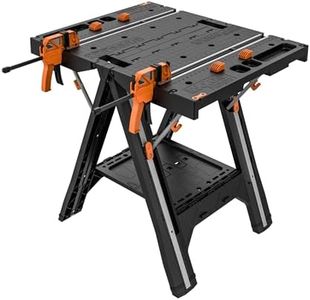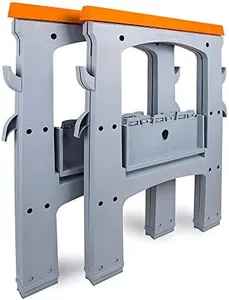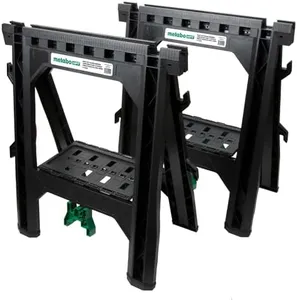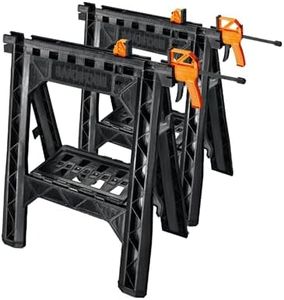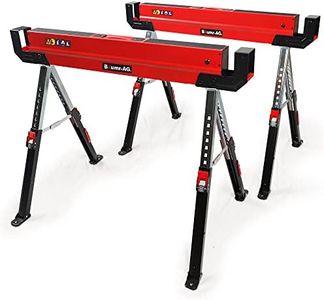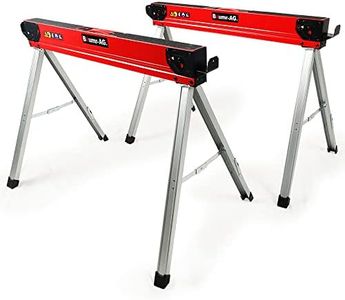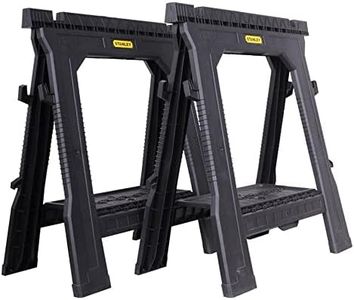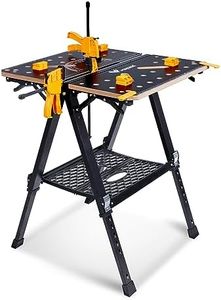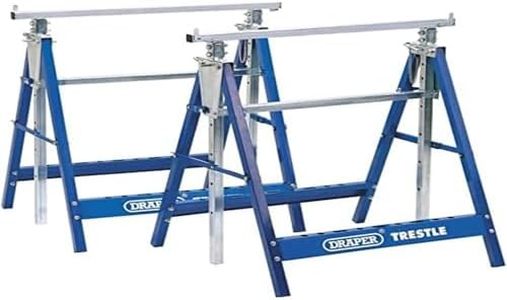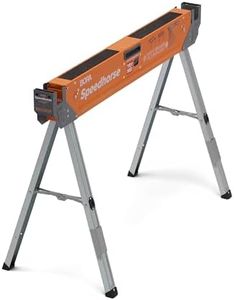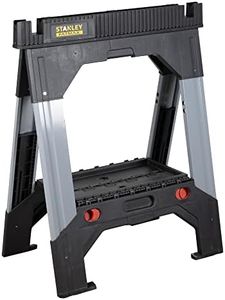We Use CookiesWe use cookies to enhance the security, performance,
functionality and for analytical and promotional activities. By continuing to browse this site you
are agreeing to our privacy policy
10 Best Sawhorses
From leading brands and best sellers available on the web.Buying Guide for the Best Sawhorses
Sawhorses are a staple for anyone setting up a workspace for cutting, woodworking, or any project that requires a sturdy, portable support. Picking the right sawhorse can make your work easier, more efficient, and safer. Since sawhorses come in many shapes, sizes, and materials, understanding their key features can help you choose one that suits your tasks, available space, and desired portability.MaterialSawhorses are commonly made from wood, plastic, or metal. The material determines strength, weight, and durability. Wooden sawhorses are traditional; they're sturdy and easy to modify but can be heavy and take up more space. Plastic sawhorses are lightweight and easy to move, but usually less durable for heavy-duty use. Metal sawhorses, often made of steel, offer great strength and durability but may be heavier and less portable. Think about how often you need to move your sawhorses and the kind of weight you'll regularly put on them when choosing the material that fits your needs.
Weight CapacityWeight capacity tells you how much weight each sawhorse can safely support, typically listed in pounds or kilograms. Light-duty sawhorses handle smaller projects but might not be reliable for heavy materials. Medium-duty models cover most home or hobby uses, while heavy-duty sawhorses are built to support heavy planks, machinery, or large sheet goods. Assess the weight of the materials and tools you usually work with and choose a sawhorse that exceeds your typical load for safety and durability.
HeightThe height of a sawhorse affects your comfort and work ergonomics. Standard sawhorses are around knee to hip height for the average person, but some are adjustable. Shorter sawhorses create a lower work surface, which can be helpful for some projects but uncomfortable for long periods. Taller or adjustable sawhorses let you set a comfortable working height or align with other surfaces. Consider the types of tasks you'll do and your own height. If you work on large items or want the flexibility to match the sawhorse to different tables, look for adjustable or taller models.
Foldability and PortabilitySome sawhorses fold up for easy storage and transport, while others are fixed. Folding models are great if you have limited space or move your sawhorses between locations. They’re also usually lighter and have handles or easy-carry features. Non-folding sawhorses are typically more stable but take up more room. Think about your storage space and whether you’ll need to carry your sawhorses around. If you have a permanent workshop, fixed might be best, but for mobile or limited-space use, choose a folding option.
Top Surface DesignThe design of the top surface influences how materials stay in place and whether the sawhorse can handle specialized tasks. Some tops are flat, some have anti-slip features, and others include grooves, slots, or clamps for holding wood, pipes, or other materials. If you plan to use your sawhorse for general cutting, a simple flat top works well. For tasks that require more stability or holding oddly shaped items, seek out tops with built-in clamps or slots. Choose a design that matches the kinds of projects you’ll tackle most often.
